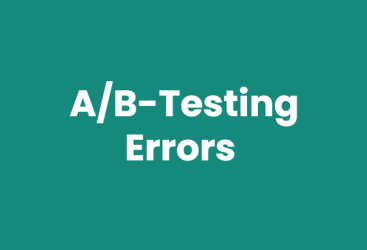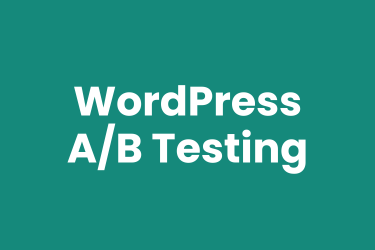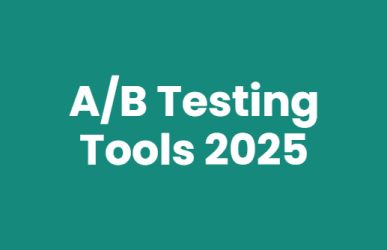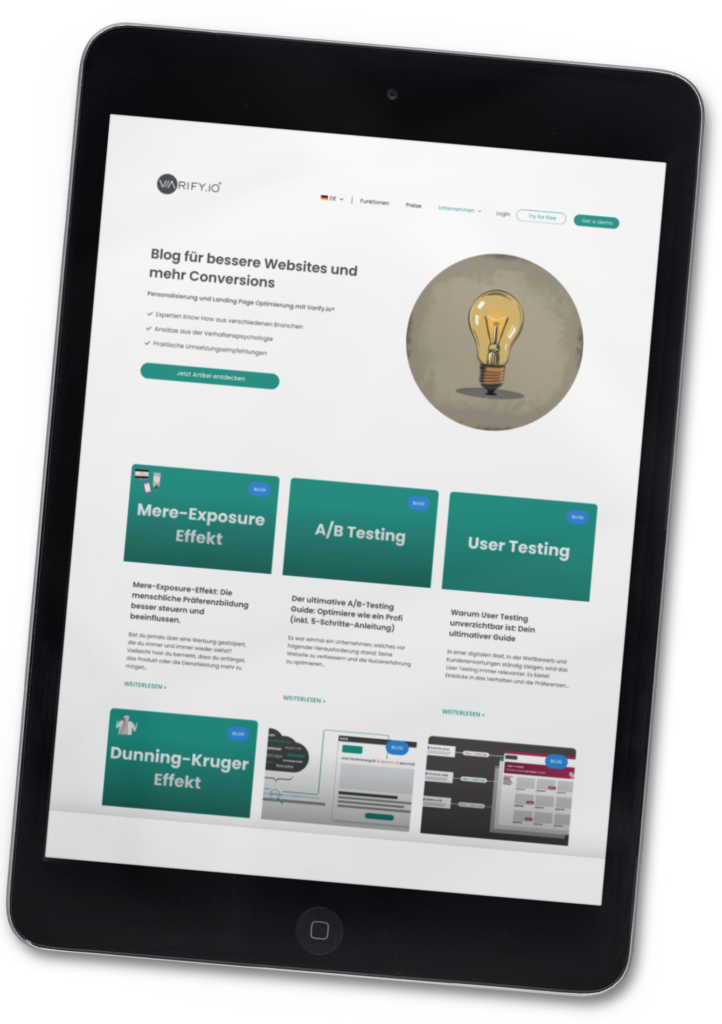Whether website, newsletter or advertisement: a split test shows which variant works better. Split tests provide reliable data on which headline is more convincing, which structure generates more inquiries or which call-to-action encourages more clicks.
Even small adjustments can have a big impact. A systematic test structure that provides clear answers is crucial.
In this article, you will find out how split tests are used in practice, what is important and what you need for meaningful results.

Table of contents
Split tests at their core: definition, origin, application
A split test is a controlled experiment: two versions of an offer are played out in parallel to find out which works better. The user split is random, the goal is clearly defined. For example, more conversions or a lower bounce rate. Instead of relying on assumptions, the test provides reliable data that enables targeted optimization. This is precisely its value in conversion optimization: decisions are measurably improved, not estimated.
The method has its origins in science. In the 1920s, the British statistician Ronald Fisher developed the basic principle in order to make different experiences experimentally comparable. The method was later used in medicine for clinical studies and was also applied in marketing from the 1960s onwards.
However, split testing as we know it today is a product of the digital era. Web technology, real-time data and automated tools have made it possible to test specific target groups and evaluate results in minutes rather than weeks.
Clarification of terms
Split test vs. A/B test:
In practice, split test and A/B test are usually used synonymously. There are only differences in theory. The term "A/B" originally refers to the comparison of two variants. "Split" refers to the even distribution of traffic across these variants. In terms of content, however, the same process is involved in both cases: finding out what works better.
Multivariate testing:
In multivariate testing, several elements are tested simultaneously, such as headline, image and button in various combinations. This is more complex, but helpful if interactions between individual elements are to be understood.
Why split tests are so effective
Split tests are among the most effective conversion optimization tools for one simple reason: they show what actually works. No guesswork, no discussions about taste or gut feeling, but concrete data on which decisions can be based.
They are particularly valuable in situations in which many small adjusting screws interact: Text, design, structure, timing. Instead of changing everything at once, you can specifically test which aspect makes a difference and how big this difference really is.
Split tests also help to minimize risks. New ideas can first be tested on a smaller scale before they are rolled out on a large scale. This makes optimization plannable, comprehensible and measurable - also vis-à-vis stakeholders.
Where can split tests be used?
Split tests are used wherever specific user reactions can be recorded and compared. They can be used in almost any digital channel. The only requirement is that there are two clearly distinguishable variants and a goal that can be measured. The decisive factors are a clean test structure with clear objectives, meaningful variants and a tool that enables the test and provides reliable data.
Essentially, there are two main areas in which split tests have proved particularly successful:
On the one hand, on your own website, where visitors become customers. On the other hand, in channels where content is actively displayed, for example in newsletters, advertisements or pop-ups. The test logic is identical. Differences result from the channel, objective and, above all, technical implementation.
Split tests on the website
Typical test areas:
- Landing pages: Which version is more convincing? Which structure leads better to the goal - long or compact, text-heavy or visual?
- Product pages: Images, prices, trust elements: it's often the details that make the difference. A different image detail or an additional note on availability can have measurable effects.
- Call-to-Actions & Buttons: Text, color, size or placement - even small adjustments change the click rate.
- Forms & booking routes: Shorter or longer? Reduce or structure mandatory fields? Every test can be worth its weight in gold here.
- Navigation & menu navigation: The way in which users move through pages can also be tested: horizontal vs. vertical menu, reduced vs. full selection.
Further areas of application for split tests
Split tests can be used far beyond the website. Especially in external channels such as email marketing or paid ads, they often provide faster feedback with comparatively little technical effort.
👉 Email marketing
Whether subject lines, sending time or layout: every change here can have a direct impact on opening and click rates. Tests help to better tailor content to target groups and minimize wastage.
👉 Ads (search, social, display)
Split tests are a decisive lever in campaign management. Variations in text, image or landing page influence click prices, relevance and conversion probability. This allows the budget to be used in a more targeted manner.
👉 Pop-ups, widgets, banners
Visual elements such as pop-ups or in-page banners can be tested in terms of timing, design and placement. Even small adjustments can have an impact on leads, bounce rate or dwell time - especially in conversion-sensitive areas.
👉 SEO split tests
A special technical case: elements such as meta titles, descriptions or internal links are tested. When implemented correctly, they provide valuable insights into organic user behavior - provided there is sufficient traffic.
The right setup: Which tools you need for split tests
To be able to carry out split tests, you need a clean technical setup. Without reliable tools, variants cannot be played out in a targeted manner, user behavior cannot be measured and results cannot be evaluated. Three central components are required for split tests on websites:
An A/B testing tool (split testing tool): Ffor creating, managing and playing out the variants
An analysis tool: To evaluate the results, e.g., via Google Analytics 4
A tag management system: For easy integration of tracking codes, e.g. with the Google Tag Manager
What a split testing tool needs to do
A good testing tool should be practical, reliable and easy to integrate. It should fulfill the following requirements:
Visual editor to change pages without code
Targeting options to specifically test certain user groups
Reliable traffic distribution (randomized, equally weighted)
GA4 integration or own analysis functions for evaluation
Stable loading times and performance, even with larger test volumes
Easy integration, e.g. via Google Tag Manager
There are several established tools on the market that basically fulfill these requirements. For example Varify.io, Optimizely, VWO or AB Tasty. The right solution depends on the setup, budget and test volume.
Why Varify is convincing here
Advantages of Varify:
Unlimited traffic in all tariffs (without paywall for growth)
Visual editor without code - ideal for quick tests without developers
Direct GA4 connection - results flow directly into familiar tracking
Transparent price structure - no hidden additional costs
Simple integration via the Google Tag Manager
Fast, personal support - even for more complex questions about integration or other issues
Varify.io offers a clear advantage, especially for teams that want to test regularly without getting lost in expensive enterprise structures.
Tools for split tests outside the website
In other channels, the setup is usually different - the testing function is often already integrated into the platform:
Email marketing: Split testing is a standard feature in tools such as Mailchimp, Brevo, and Hubspot.
Ads (Google Ads, Meta Ads, etc.): Split tests can be created directly in the campaign structures.
Pop-ups, widgets, banners: These elements can be tested directly in many A/B testing tools such as Varify, as they are part of the website structure.
Carrying out a split test: from concept to implementation
1. formulate objective and hypothesis
Before you create variants, you need a clear goal and a well-founded hypothesis. The goal defines what you want to optimize for. For example, this could be a higher conversion rate, more clicks on a certain button or a lower bounce rate.
The hypothesis describes what change you are testing and what effect you expect.
It should:
- Be specific: related to a concrete element
- Be goal-oriented: linked to a measurable goal
- Be justified: derived from data, experience or user feedback
Example:
If we change the button text from "Send now" to "Request a free quote", the conversion rate increases because the benefit is more clearly recognizable.
Avoid general statements such as "We'll try something different". No meaningful testing is possible without a clear goal.
2. ensure tracking and integration
Before you start, the setup must work. The analysis tool (e.g. GA4) and A/B testing tool (e.g. Varify.io) must be correctly connected, ideally via a tag management system such as Google Tag Manager. Check that all events are triggered correctly. Only when the measurement is complete is it worth starting the test.
3. create variants in the tool
4. define target group and traffic distribution
5. calculate runtime and sample size
6. analyze results and make a decision
7. document and further optimize learnings
Split test statistics: simply explained
Split tests only provide reliable results if they are set up and evaluated in a statistically correct manner. This does not require in-depth statistical knowledge, but an understanding of key concepts such as significance, sample size and relevance.
The most important statistical principles for split tests at a glance:
Statistical significance
Statistical significance indicates how likely it is that an observed difference between two variants did not occur by chance. As a rule, a result above 95 % significance is considered reliable. This means that there is only a 5% probability that the effect is purely random.
Significance means that the measured difference is large and consistent enough to be considered "real" within a defined statistical risk. This risk is controlled by the confidence level.
Our free significance calculator can be used to calculate the statistical significance.

Confidence level
Whether a test result is considered significant depends on the selected confidence level. It determines how high the certainty must be for a measured difference to be considered reliable. In most cases, this value is 95 %. This corresponds to an error tolerance of 5 %. This means that there is a residual risk of 1 in 20 that the result is purely random.
This threshold has become established because it offers a good balance between informative value and data volume. Those who work at a lower level obtain results more quickly, but risk making more wrong decisions.
Confidence interval
The confidence interval shows the range in which the actual value of a tested variant is most likely to lie. Instead of just outputting a single value, a range is calculated. Example: Instead of exactly 5 % conversion rate, the result is 4.6 % to 5.4 %.
A narrow interval indicates a stable database and low fluctuations. If the interval is wide, this indicates scattering or too little data. If the intervals of two variants overlap, no clear difference can be detected, even if one variant performs better on average.
Many tools display these ranges graphically and thus help to evaluate test results more realistically.
Sample size and duration:
A valid result requires sufficient data to be available. The sample size determines how many users must be included in the test in order to be able to make reliable statements. Among other things, it depends on the expected conversion rate, the desired confidence level and the size of the assumed effect.
If you want to measure small differences, you need a lot of data. The smaller the effect, the larger the sample must be in order to prove it with statistical certainty. Tools such as Varify.io or specialized significance calculators help to determine the optimal amount of data in advance.
The duration is also crucial. A test should run long enough to map typical usage patterns, for example differences between weekdays or seasonal fluctuations. At the same time, it should collect enough data to be able to calculate statistical significance.





